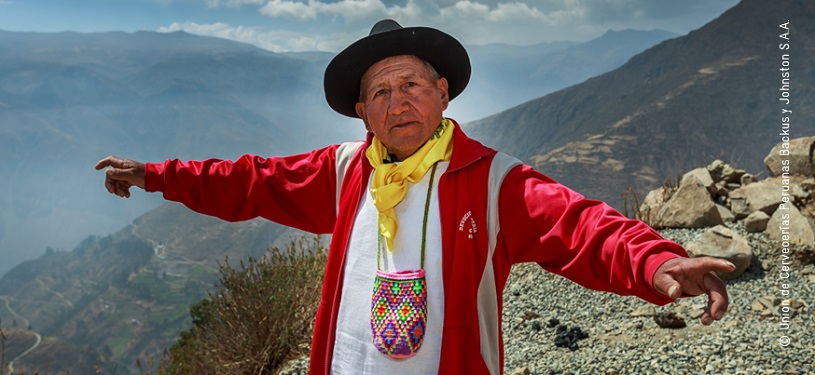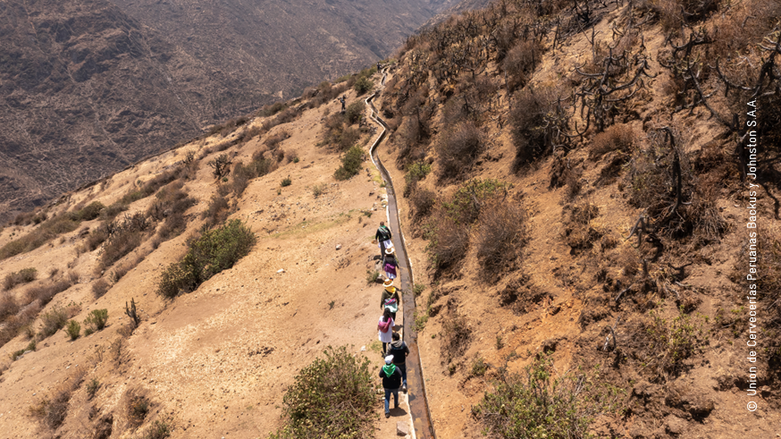
10.07.2024
Peru: Fresh water in old canals
GIZ has improved the water supply in Lima by reactivating the historical water canals.
Lima is one of the world’s driest megacities, but now stone canals dating back 1,400 years are to provide a more reliable water supply for the population in and around Peru’s capital. The Deutsche Gesellschaft für Internationale Zusammenarbeit (GIZ) GmbH is reactivating the old canals. To do so, it is cooperating with the Peruvian drinks manufacturer Union de Cervecerías Peruanas Backus y Johnston S.A.A., the Water Fund for Lima and Callao, and The Nature Conservancy, an international environmental organisation. The German Federal Ministry for Economic Cooperation and Development (BMZ) commissioned the project as part of develoPPP, a support programme for sustainable business initiatives.
Known as amunas, the water canals were built in pre-Incan times. They were used to collect mountain water from the Andes in basins and channel it down into the towns and cities through canals under and above ground. Canals stretching a length of 32.5 km have now been restored. And these efforts have been successful: more than three million cubic metres of additional water now flows into the groundwater network each year.
This benefits up to 3,000 inhabitants in four rural communities in the highlands of Lima.
 © Union de Cervecerías Peruanas Backus y Johnston S.A.A.
© Union de Cervecerías Peruanas Backus y Johnston S.A.A.Fresh mountain spring water for the megacity
Naturally filtered through the soil, the water comes back up where it is needed: in the groundwater aquifer that supplies water to the villages around Lima. Josmiel Flores lives in one of these villages, San Pedro de Casta, and has seen the change first hand: ‘Water has been scarce in recent years. Now we have more water. We are very happy and want to continue working on collecting water in San Pedro de Casta,’ he says.
GIZ has provided training so that the people living in the communities can achieve this goal: 900 inhabitants have undergone training and are now able to maintain, operate and monitor the amunas. The progress made by the project has been captured on film too: ‘Our Blue World’, a documentary, shows GIZ’s work on the historical amunas against the impressive backdrop of the Andes.